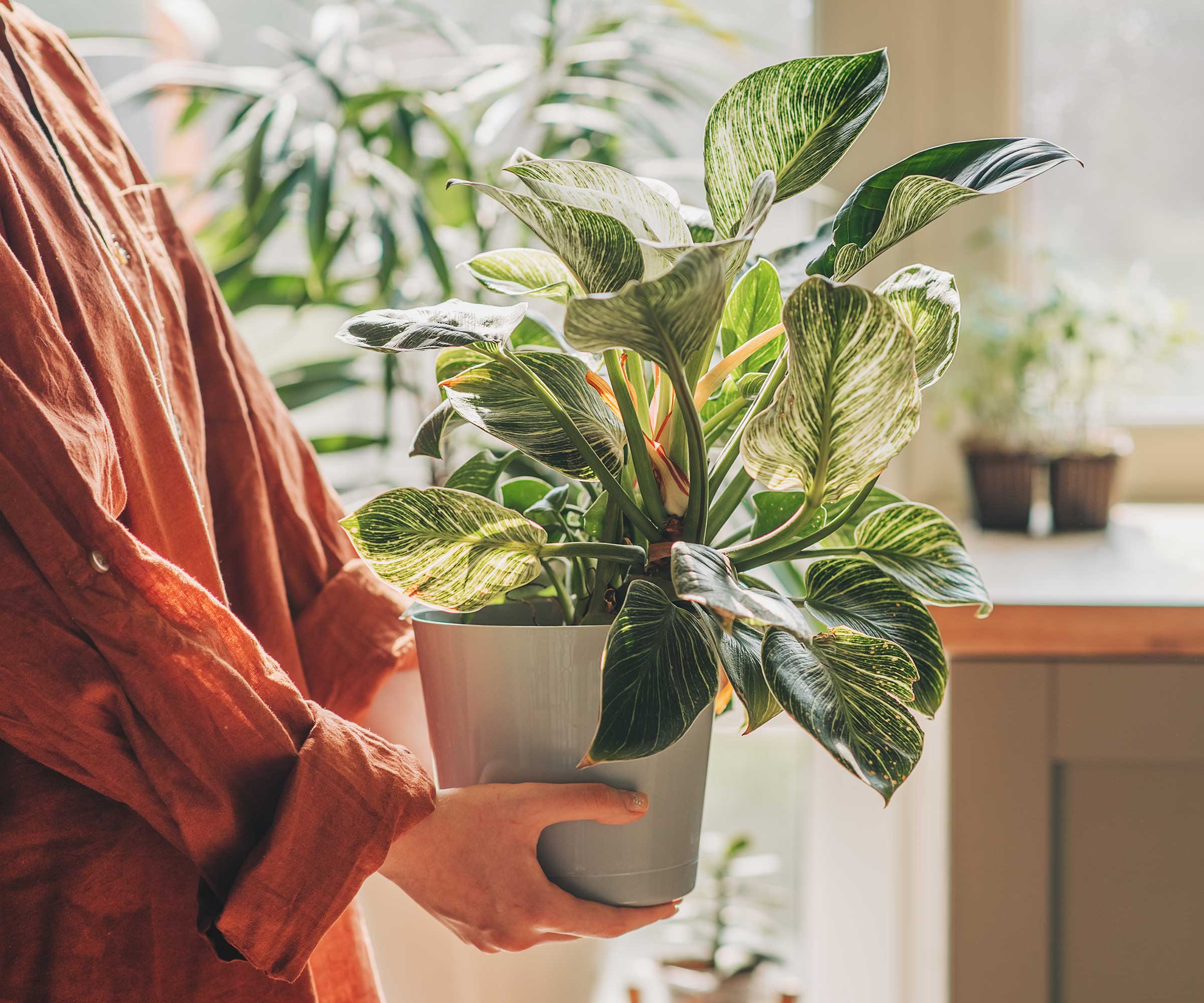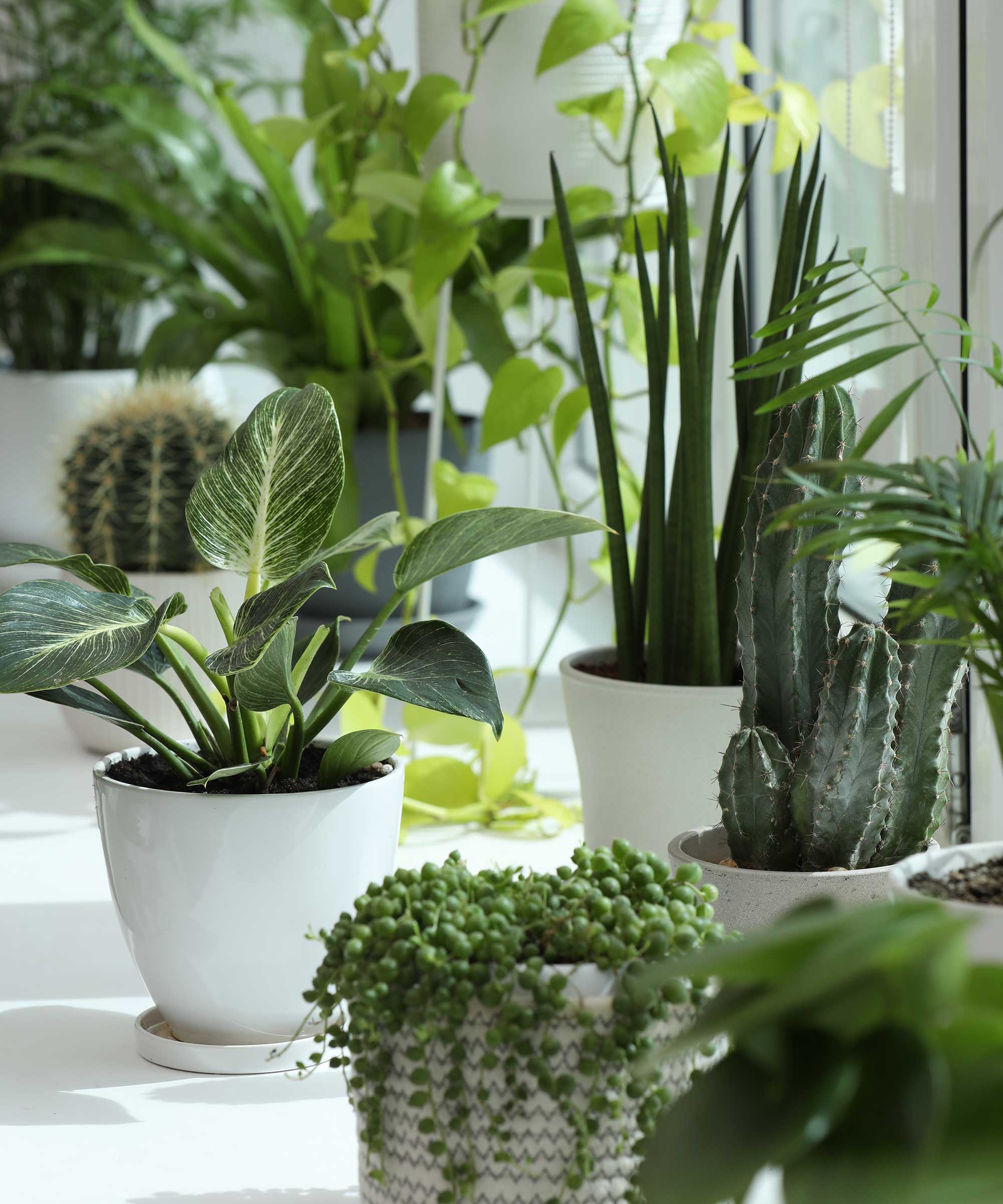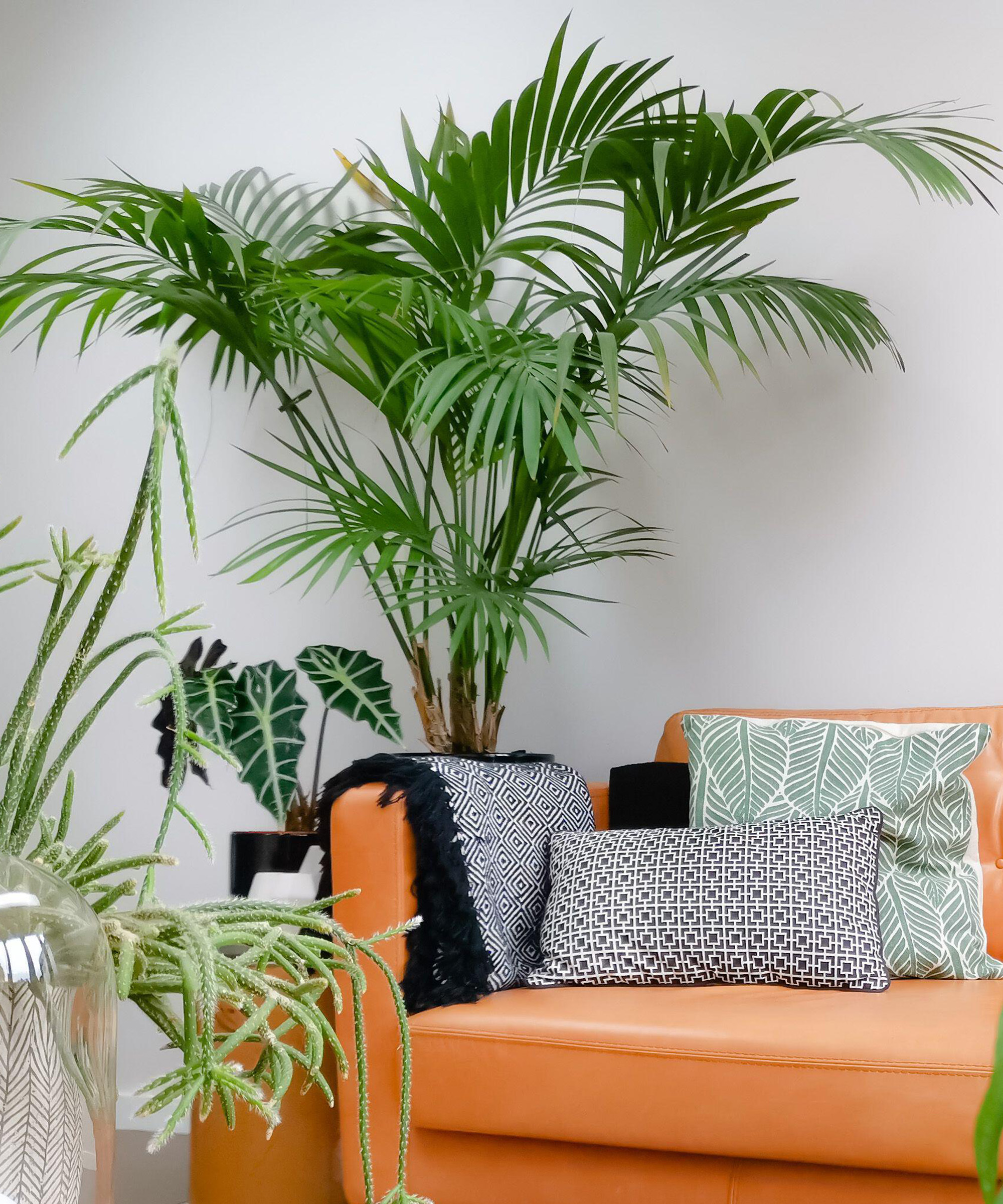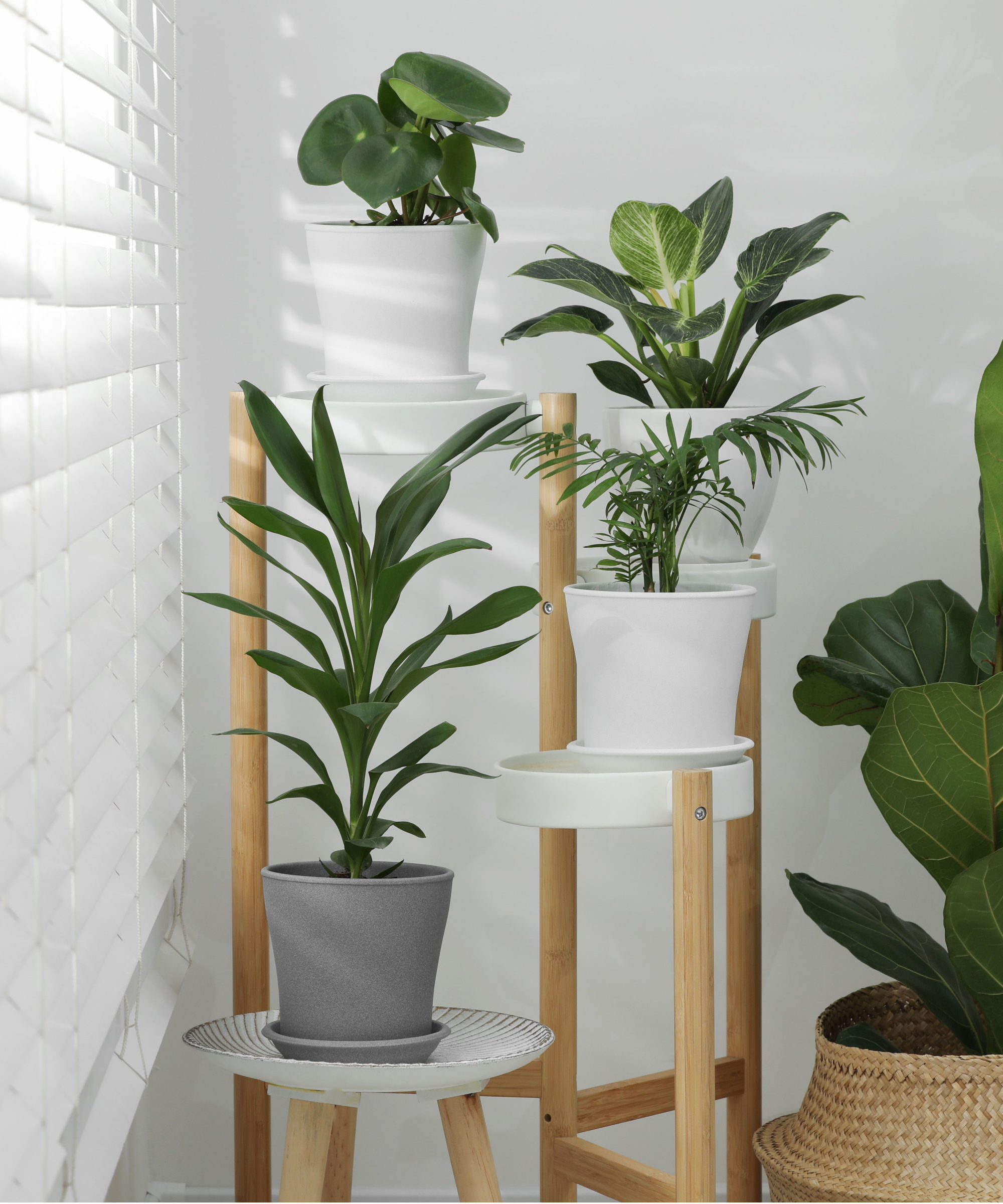Feng Shui experts warn these 5 houseplant mistakes will hinder your good fortune in 2025 – and tips on how to rectify them
With some careful consideration, you can use plants to secure positive energy in your home


In Feng Shui, houseplants play a very important role. There are some indoor plants considered ideal for promoting positive energy in your home and others that can cause the opposite effect.
But, it isn't just a case of selecting Feng Shui plants and placing them in your home without a second thought. Bringing good fortune to your home with Feng Shui plants takes a lot of careful consideration: 'Houseplants can actually be used as a Feng Shui remedy to bring balance to the home and inspire a supportive and harmonious environment,' says Suzanne Roynon, Feng Shui expert.
Of course, this means there are a few errors you can make with Feng Shui houseplants. But don't worry, making Feng Shui houseplant mistakes is just part of the learning process. Plus, they're easy to fix. To help set you on the right path, I've spoken to Feng Shui experts to find out more about the common indoor plant mistakes to avoid to bring good fortune for the year ahead.

5 Feng Shui houseplant mistakes to avoid
If you're new to Feng Shui, it can be hard to take on all the principles in one go. Instead, try working through a specific area at a time - like Feng Shui houseplants. Below, experts explain some Feng Shui houseplant mistakes to avoid to ensure you use plants in your home effectively to promote positive energy and good fortune.
1. Placing too many houseplants together

'Plants are regarded as ‘wood remedy’ in Feng Shui and when used in the right place, can enhance growth and flexibility within the home,' says Suzanne. 'They also support ‘fire remedy’ and as most homes will have three or more areas in need of a fiery boost, it does give lots of flexibility in plant placement,' she explains.
For this reason, it's helpful to Feng Shui energy map your home to figure out which areas will benefit from plants. One mistake in placement, however, is putting too many houseplants together. Even though it's an effective method to increase humidity for indoor plants, it can create an over-abundance of wood or fire energy and throw things off-balance in your home.
'For example, too many plants in the bedroom can be too activating for sleeping and cause some sleep disruptions,' notes Hannah Yang, Psy.D, licensed psychologist and Feng Shui Expert.
Design expertise in your inbox – from inspiring decorating ideas and beautiful celebrity homes to practical gardening advice and shopping round-ups.
To avoid this blocking of positive energy, don't overcrowd your home with the best indoor plants, and rather place them more intentionally: 'Every home has unique energy, and it’s definitely worth knowing which parts of a specific home are particularly conducive to positioning houseplants for good fortune,' says Suzanne.

Suzanne is an Interiors Therapist, Feng Shui consultant, and author of Welcome Home, how stuff makes or breaks your relationship. She specializes in understanding the energetic impact of homes and certain possessions may have on all aspects of life, health and relationships, and the ways in which ‘stuff’ can actively prevent people and families from thriving and enjoying the lifestyle they deserve.
2. Choosing sword-shaped leaves for your home

The shape of the houseplants you bring in your home also plays a role in the kind of energy they support. That's why it isn't surprising Feng Shui experts advise steering clear of sharper foliage.
'Anything with sharp sword or dagger-like leaves, anything prickly, with thorns, claws or barbs, and anything poisonous for humans or pets should be avoided,' says Suzanne.
This includes snake plants, cacti, some succulents, and rubber trees which are toxic to cats, among others.
'Spiky plants like aloe vera are going to cut into the energy of the home and the people in it, causing tension, irritability, frustration, and exhaustion,' Suzanne explains. 'If you actually use aloe vera for your skin, keep one plant in the place you will use it, provided that’s not a bedroom,' she advises.
'Plants with the best energy have rounded or softer leaves,' Hannah adds. Luckily, there are plenty of houseplants with softer, more welcoming foliage to choose from.
This includes the best ferns to grow indoors and even some of the best indoor trees, like a money tree. Make sure to also browse pet-safe indoor plants to extend the good fortune to the furrier members of your household.

Visionary and healthcare entrepreneur by passion, Licensed Psychologist by training, Dr. Hannah Yang loves creating new possibilities in the world of mental health and wellness. Dr. Yang established Balanced Awakening in 2015 as a niche psychotherapy practice for women. She loves to empower women to be their best selves in all facets of life. Hannah also loves to tap into her passion for design and Feng Shui to create fabulous environments for herself, her team, and her clients.
3. Growing plants of the wrong size for your home

Every houseplant-lover knows one of the greatest joys of indoor plants is the fact they come in all shapes and sizes. In Feng Shui, whether you opt for tall indoor plants or small indoor plants is particularly important.
If you have a home with lower ceilings but you choose large plants that don't quite fit, leaving the top foliage squished, it can bring a restricted energy, for example. Likewise, tiny plants growing in a large open space can feel lost and displaced.
Therefore, take some time to consider where plants will live in your home and how you can style houseplants so they grow comfortably before purchasing them. If you aren't able to offer this, it's wise to not bring the plant home with you.
On a similar note, using multiple plants of different sizes to fill a space can work well to create both a harmonious balance and attractive display.
4. Not correctly caring for your plants

Bringing Feng Shui plants into your space and placing them with careful consideration is just one element of using plants as a remedy in your home - you then need to maintain the positive energy by keeping on top of plant care.
'A sick, dying, or dead plant will diminish the quality of the energy around it and that in turn will impact on the people in the home,' Suzanne says. 'Keep the soil in good condition, water appropriately and don’t allow a plant to become restricted or pot bound – this constriction will reflect back in other parts of your life,' she explains.
Of course, there are some houseplants that like being root-bound more so than others, but for the most part you shouldn't let your plants grow to this state. As Suzanne notes, letting your houseplants live in a negative environment will only reflect in your own home and life.
'If a plant isn't doing well, see what you can do to attend to it and get it looking better. If it doesn't seem like it's going to make it, you're better off getting rid of it,' Hannah advises.
There are lots of things in your plant care kit that can help you be a better plant parent and reduce the number of plant fatalities in your home. This soil moisture meter from Amazon, for example, identifies when it's time to water your houseplants. Likewise, use grow lights for houseplants (like this grow light from Walmart) to boost lighting during darker days - failing to do so is not only a Feng Shui houseplant mistake, but also a winter houseplant care mistake.
5. Pairing the wrong plants together

An imbalance can easily be caused by accidentally placing the wrong plants together. While some will grow harmoniously in the same position, others will struggle to share space and thrive together.
This is largely due to different plants having different needs. For example, placing the best indoor succulents, which don't need watering very frequently, next to a fern, which doesn't like to dry out, can cause conflict in your watering regime.
Above all, it makes it tricky to keep on top of houseplant care, in turn leading to declining houseplant health. It may also bring common houseplant pests to a specific area of your home, or a spread of houseplant diseases.
For this reason, pair houseplants with similar care requirements together to make it easier to maintain health and positive energy around them.
If you have a large houseplant collection, you might find it useful to use a houseplant journal (from Amazon) to keep track of when your plants have been fertilized and watered.
FAQs
Which houseplants are considered the luckiest in Feng Shui?
There are many plants considered to bring good fortune, all influenced by a range of cultures and practices. In Feng Shui, lucky houseplants include money trees, jade plants, anthuriums, peace lilies, and more. Generally speaking, it's the plants that have soft, round foliage, rather than spikey, structural foliage.
How can you improve the energy of your houseplants?
In Feng Shui principles, there are a few ways to improve the energy your houseplants are contributing to your space.
'The key is understanding what your plant needs in terms of light, water, and food,' says Hannah Yang, Psy.D, licensed psychologist and Feng Shui Expert. 'You can also tap into your intuition, adjust the guidelines and monitor to see how it does when you do,' she adds.
You might also consider trying Feng Shui energy mapping: 'Have the unique Feng Shui report prepared for your home and put plants where they will bring maximum benefit to you and your environment,' advises Suzanne Roynon, Feng Shui expert.
As well as avoiding these Feng Shui houseplant mistakes, take note of Feng Shui plants to avoid that will automatically hinder the energy in your home for different reasons. You can also use your gut feeling about plants when deciding if they are benefitting your space or causing problems: If a plant isn't bringing you a good feeling, it's one you likely shouldn't keep in your home.

Tenielle is a Gardens Content Editor at Homes & Gardens. She holds a qualification in MA Magazine Journalism and has over six years of journalistic experience. Before coming to Homes & Gardens, Tenielle was in the editorial department at the Royal Horticultural Society and worked on The Garden magazine. As our in-house houseplant expert, Tenielle writes on a range of solutions to houseplant problems, as well as other 'how to' guides, inspiring garden projects, and the latest gardening news. When she isn't writing, Tenielle can be found propagating her ever-growing collection of indoor plants, helping others overcome common houseplant pests and diseases, volunteering at a local gardening club, and attending gardening workshops, like a composting masterclass.